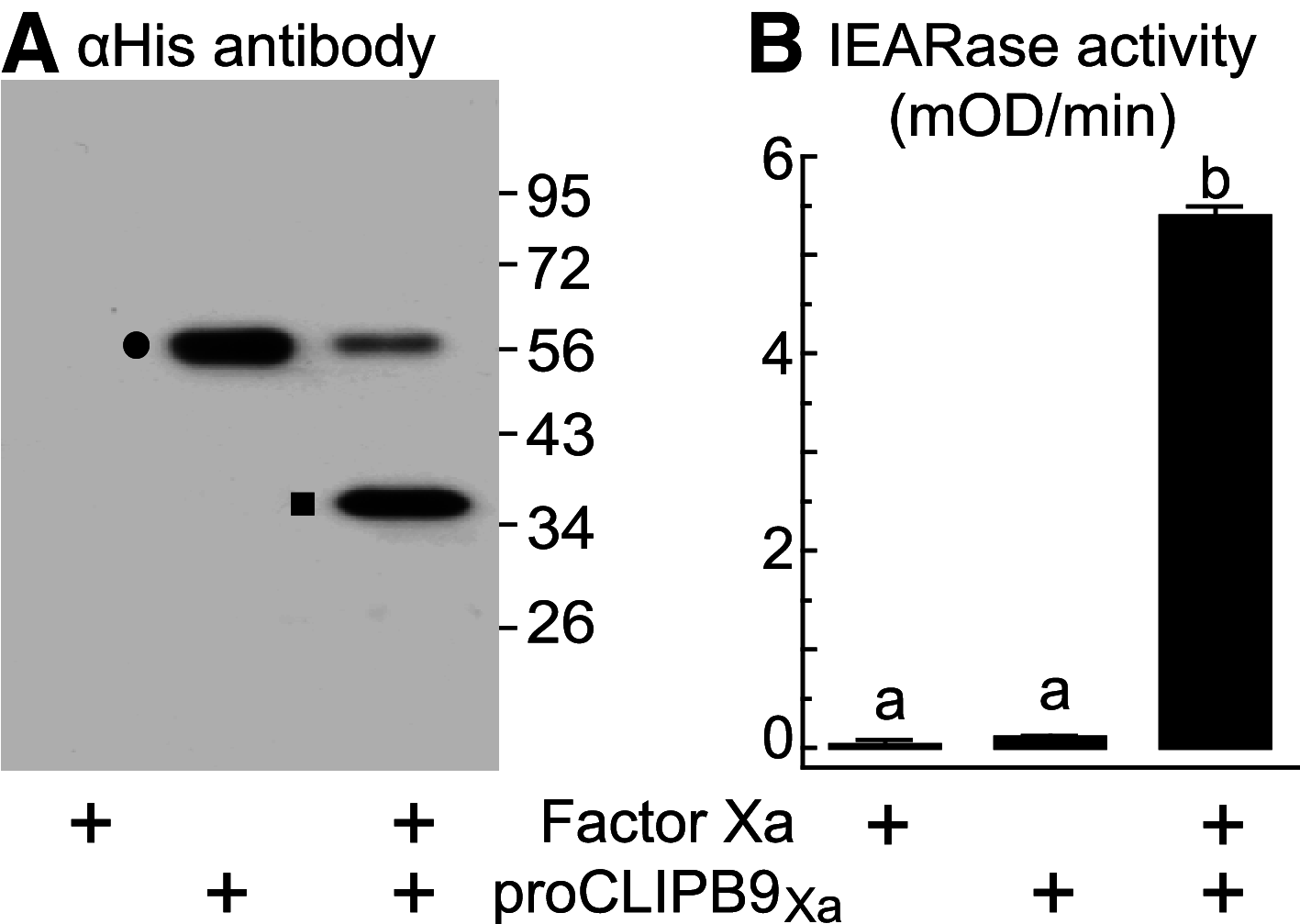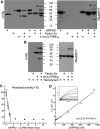Characterization of a regulatory unit that controls melanization and affects longevity of mosquitoes
- PMID: 20953892
- PMCID: PMC3070200
- DOI: 10.1007/s00018-010-0543-z
Characterization of a regulatory unit that controls melanization and affects longevity of mosquitoes
Abstract
Melanization is an innate immune response in arthropods that encapsulates and kills invading pathogens. One of its rate-limiting steps is the activation of prophenoloxidase (PPO), which is controlled by an extracellular proteinase cascade and serpin inhibitors. The molecular composition of this system is largely unknown in mosquitoes with the exception of serpin-2 (SRPN2), which was previously identified as a key negative regulator of melanization. Using reverse genetic and biochemical techniques, we identified the Anopheles gambiae clip-serine proteinase CLIPB9 as a PPO-activating proteinase, which is inhibited by SRPN2. Double knockdown of SRPN2 and CLIPB9 reversed the pleiotrophic phenotype induced by SRPN2 silencing. This study identifies the first inhibitory serpin-serine proteinase pair in mosquitoes and defines a regulatory unit of melanization. Additionally, the interaction of CLIPB9 and SRPN2 affects the life span of adult female mosquitoes and therefore constitutes a well-defined potential molecular target for novel late-life acting insecticides.
Figures




Similar articles
-
CLIPB8 is part of the prophenoloxidase activation system in Anopheles gambiae mosquitoes.Insect Biochem Mol Biol. 2016 Apr;71:106-15. doi: 10.1016/j.ibmb.2016.02.008. Epub 2016 Feb 27. Insect Biochem Mol Biol. 2016. PMID: 26926112 Free PMC article.
-
Structural and inhibitory effects of hinge loop mutagenesis in serpin-2 from the malaria vector Anopheles gambiae.J Biol Chem. 2015 Jan 30;290(5):2946-56. doi: 10.1074/jbc.M114.625665. Epub 2014 Dec 17. J Biol Chem. 2015. PMID: 25525260 Free PMC article.
-
Increased melanizing activity in Anopheles gambiae does not affect development of Plasmodium falciparum.Proc Natl Acad Sci U S A. 2006 Nov 7;103(45):16858-63. doi: 10.1073/pnas.0608033103. Epub 2006 Oct 25. Proc Natl Acad Sci U S A. 2006. PMID: 17065316 Free PMC article.
-
Regulation and function of the melanization reaction in Drosophila.Fly (Austin). 2009 Jan-Mar;3(1):105-11. doi: 10.4161/fly.3.1.7747. Epub 2009 Jan 2. Fly (Austin). 2009. PMID: 19164947 Review.
-
Serpins in arthropod biology.Semin Cell Dev Biol. 2017 Feb;62:105-119. doi: 10.1016/j.semcdb.2016.09.001. Epub 2016 Sep 4. Semin Cell Dev Biol. 2017. PMID: 27603121 Free PMC article. Review.
Cited by
-
Identification of immunity-related genes in Ostrinia furnacalis against entomopathogenic fungi by RNA-seq analysis.PLoS One. 2014 Jan 17;9(1):e86436. doi: 10.1371/journal.pone.0086436. eCollection 2014. PLoS One. 2014. PMID: 24466095 Free PMC article.
-
The Anopheles innate immune system in the defense against malaria infection.J Innate Immun. 2014;6(2):169-81. doi: 10.1159/000353602. Epub 2013 Aug 28. J Innate Immun. 2014. PMID: 23988482 Free PMC article. Review.
-
Small RNA-Seq Analysis Reveals miRNA Expression Dynamics Across Tissues in the Malaria Vector, Anopheles gambiae.G3 (Bethesda). 2019 May 7;9(5):1507-1517. doi: 10.1534/g3.119.400104. G3 (Bethesda). 2019. PMID: 30846481 Free PMC article.
-
Insect immunology and hematopoiesis.Dev Comp Immunol. 2016 May;58:102-18. doi: 10.1016/j.dci.2015.12.006. Epub 2015 Dec 13. Dev Comp Immunol. 2016. PMID: 26695127 Free PMC article. Review.
-
Preparation and Use of a Yeast shRNA Delivery System for Gene Silencing in Mosquito Larvae.Methods Mol Biol. 2019;1858:213-231. doi: 10.1007/978-1-4939-8775-7_15. Methods Mol Biol. 2019. PMID: 30414120 Free PMC article.
References
Publication types
MeSH terms
Substances
Grants and funding
LinkOut - more resources
Full Text Sources

